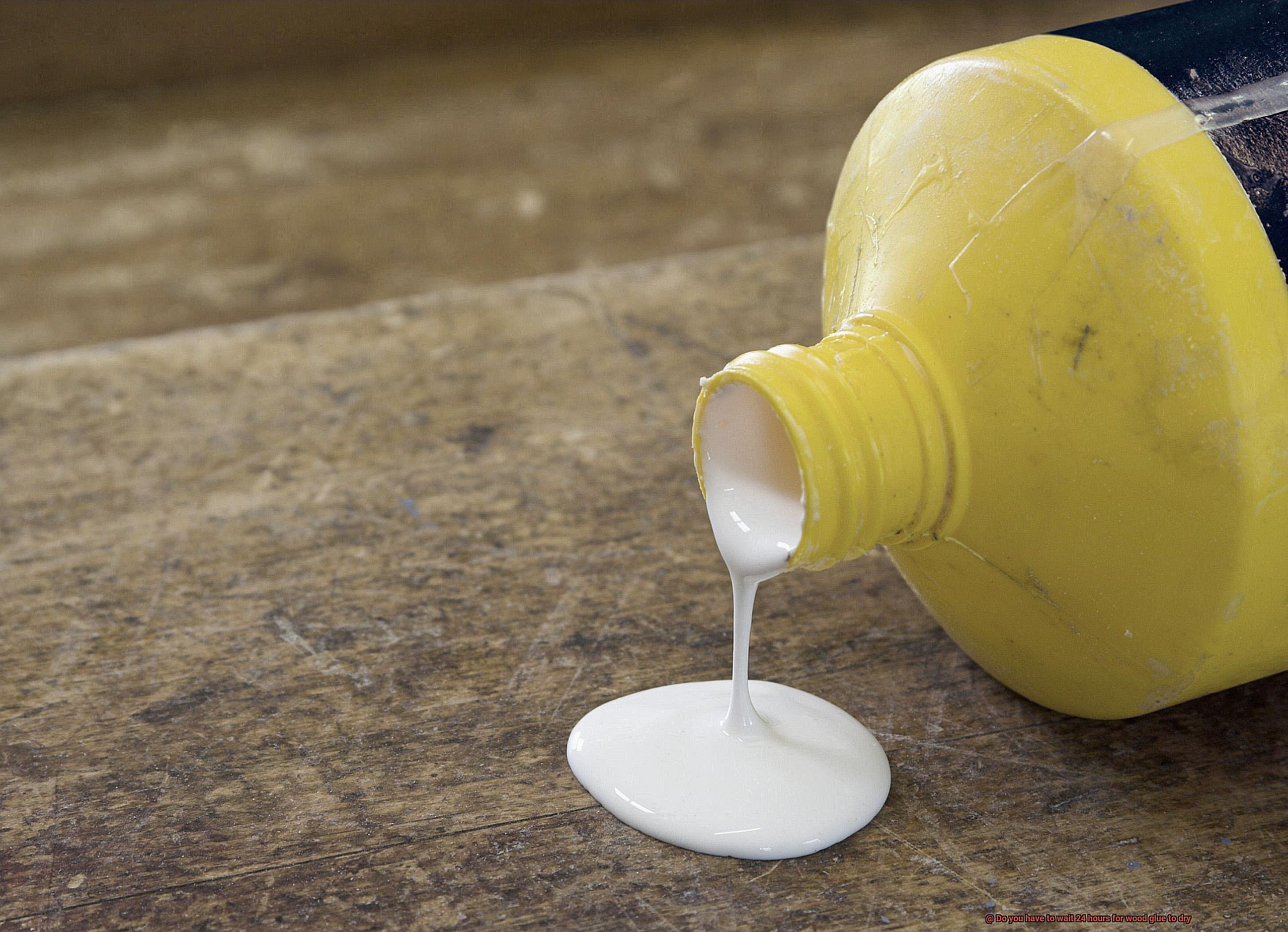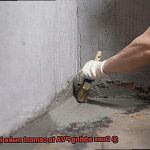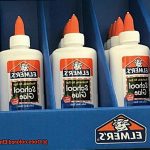If you’ve ever found yourself scratching your head over how long it takes for wood glue to dry, you’re not alone. The internet is flooded with conflicting information, with some folks swearing by a strict 24-hour waiting period and others offering up shortcuts that promise faster results. So, what’s the real deal? How long do you actually have to wait for wood glue to dry?
In this blog post, we’re diving headfirst into the fascinating science behind wood glue drying to debunk common myths and give you the lowdown on the process. Turns out, there are a bunch of factors at play when it comes to drying time – from the type of glue you’re using to the environmental conditions in your workshop. It’s time to unravel these mysteries together and get down to the nitty-gritty.

Join us as we explore everything from the different variables that can affect wood glue drying time to whether there are any alternatives for those who need speedier results. Plus, we’ll dish out some practical tips for ensuring top-notch bonding strength in all your woodworking projects. By the end of this article, you’ll be armed with knowledge that’ll help you make informed decisions about wood glue drying time and achieve jaw-dropping results.
Get ready for our next section where we’ll delve into various types of wood glue and their associated drying times. We’re about to revolutionize your woodworking game with expert-backed advice that’s sure to take your skills up a notch. Whether you’re a newbie or a seasoned pro, this blog post is here to set things straight and ensure that wood glue drying time is no longer a mystery. Let’s dive in together and elevate the quality and efficiency of your woodworking projects.

What is Wood Glue?
Contents
- 1 What is Wood Glue?
- 2 How Long Does Wood Glue Take to Dry?
- 3 Factors Affecting Drying Time of Wood Glue
- 4 Types of Wood Glues and Their Drying Times
- 5 Temperature and Humidity’s Role in Wood Glue Drying Time
- 6 Thickness of the Glue Line and Drying Time
- 7 Is the Glue Fully Cured After 24 Hours?
- 8 Following Manufacturer Instructions for Optimal Results
- 9 Conclusion
Wood glue, known by many names such as carpenter’s glue or woodworking adhesive, possesses an enchanting ability to unite pieces of wood with a bond that is both robust and enduring. In this captivating article, we will delve into the realm of wood glue, exploring its myriad uses and sharing invaluable tips for achieving flawless bonding. Prepare to be spellbound as we embark on a journey through the enchanted world of wood glue.
The Power of Penetration:
Wood glue possesses an extraordinary superpower—it can infiltrate the porous surface of wood, creating a bond so tight it seems to defy nature itself. Its low viscosity allows it to seep deep into the very fibers of the wood, guaranteeing a secure connection as it dries.
Types of Wood Glue:
- Yellow/White PVA Glue: This versatile adhesive reigns supreme in general woodworking projects, providing a bond that is both sturdy and swift to form.
- Polyurethane Glue: Unrivaled in outdoor projects or areas exposed to moisture, this adhesive forms an impervious and waterproof bond.
- Specialty Glues: A world of possibilities awaits with specialized wood glues designed for specific needs, such as fast-drying cyanoacrylate glue or high-strength epoxy.
Beyond Bonding:
Wood glue offers more than just impeccable bonding:
- Gap-Filling: It possesses the ability to seamlessly fill small imperfections or gaps between wood surfaces, ensuring a connection that is as flawless as it is strong.
- Paintable and Sandable: Once fully cured, wood glue becomes a seamless part of the woodwork, allowing for integrated finishes through painting and sanding.
Drying Time:
The drying time of wood glue varies depending on factors such as the type of glue used, environmental conditions, and the thickness of the glue line.
- Traditional PVA glues typically set within 12-24 hours, while polyurethane glues may require up to 72 hours for maximum strength.
- Temperature and humidity wield their influence over drying time, with higher temperatures and lower humidity accelerating the process.
Patience is Key:
To unlock the true potential of wood glue, patience is required. Waiting a minimum of 24 hours before subjecting glued joints to stress or load is crucial for achieving an unbreakable bond. Always consult the manufacturer’s instructions for precise drying times.
How Long Does Wood Glue Take to Dry?
Wood glue is a remarkable adhesive that works wonders in woodworking projects. Its strong bonding properties make it a go-to choice for craftsmen. However, understanding the drying time of wood glue is essential for achieving successful bonding.
In this comprehensive guide, we will delve into the various factors that influence drying time, such as temperature, humidity, and the type of glue used. By exploring these factors, we aim to provide you with valuable insights to ensure optimal results in your woodworking endeavors.
Types of Wood Glue:
- Yellow or white PVA glue: Typically, this type of glue dries within 30 minutes to an hour. However, it’s important to note that full curing may take up to 24 hours.
- Polyurethane glue: With a drying time ranging from 30 minutes to an hour, polyurethane glue requires a longer curing period of up to 24 hours to reach its maximum strength.
- Epoxy glue: Epoxy glues offer exceptional strength once fully cured. However, they have a longer drying time, usually ranging from 1 to 5 hours.
Environmental Conditions:
- Temperature: Higher temperatures expedite the drying process, while lower temperatures slow it down. Adjusting the temperature accordingly can help optimize drying time.
- Humidity: Low humidity levels accelerate drying, while high humidity prolongs it. Controlling the humidity in your workspace can significantly impact the speed at which wood glue dries.
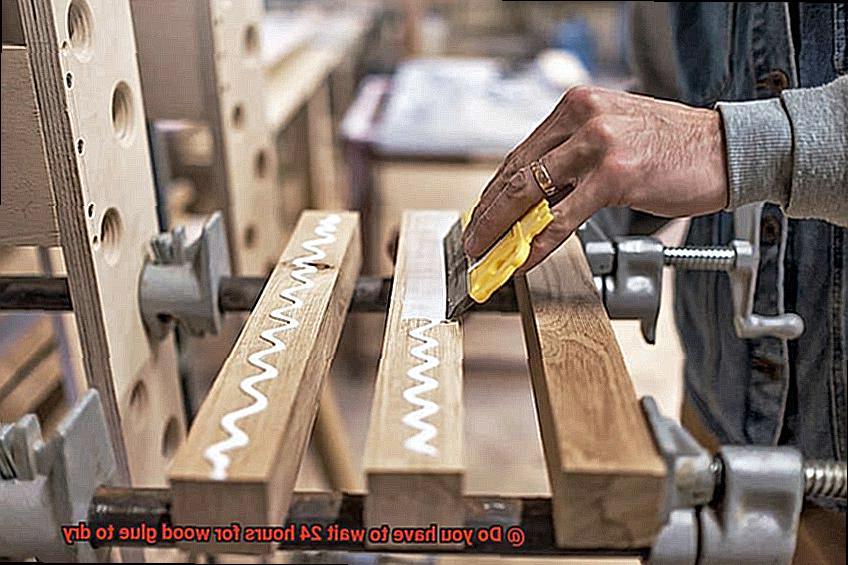
Size and Nature of the Joint:
- Joint size: Smaller joints with less surface area tend to dry faster than larger ones due to increased exposure to air.
- Porous woods: Woods with higher porosity may absorb more moisture from the glue, resulting in longer drying times.
Tips for Successful Bonding:
- Follow manufacturer’s instructions: Different brands and formulations of wood glue may have slight variations in drying times and curing periods. Paying heed to the manufacturer’s guidelines ensures optimal results.
- Allow 24 hours before stressing the joint: Waiting for at least 24 hours allows the glue to fully cure and reach its maximum bond strength, ensuring a durable and reliable bond.
- Apply pressure: Holding the glued pieces together firmly during the drying process, using clamps or other means of pressure, promotes a tight bond and prevents any movement that could compromise the joint.
Factors Affecting Drying Time of Wood Glue
Waiting too long for the glue to dry can delay progress, while rushing the drying process can lead to weak bonds and compromised craftsmanship. So, what are the factors that affect the drying time of wood glue? Let’s dive in and find out.
First and foremost, the type of wood glue being used plays a significant role in drying time. There are various types of wood glue available, each with its own unique properties and drying characteristics. For instance, PVA glues typically have a faster drying time compared to polyurethane glues. So, understanding the specific characteristics of the glue you are using is crucial in managing drying time.
Next, environmental conditions such as temperature and humidity can greatly impact drying time. Higher temperatures and lower humidity levels generally promote faster drying, while lower temperatures and higher humidity levels slow down the process. This means that working in a warm and dry environment will expedite the drying time of wood glue. On the other hand, working in cooler and more humid conditions will require more patience.
The thickness of the glue application is another factor to consider. Thicker layers take longer to dry compared to thinner layers. It is recommended to apply a thin and even layer of glue for faster drying. Excessive glue application can lead to prolonged drying times and potential bonding issues.
The porosity of the wood surface being glued also affects drying time. Highly porous wood surfaces tend to absorb more moisture from the glue, leading to longer drying times. In contrast, less porous or sealed wood surfaces may require less drying time as they do not absorb as much moisture from the glue.
Applying sufficient pressure during clamping or holding the glued pieces together is essential for faster drying. The pressure ensures better contact between the adhesive and the wood surfaces, facilitating faster evaporation of moisture and subsequent drying.
Finally, some wood glues come with additives or accelerators that can speed up the drying process. These additives are designed to reduce drying time and increase bonding strength. It is important to follow the manufacturer’s instructions regarding the use of such additives, as excessive amounts may affect the glue’s performance or compromise the bond.
Types of Wood Glues and Their Drying Times
In the world of woodworking, glue is the unsung hero that holds everything together. But have you ever wondered about the mysterious drying times of different wood glues? In this article, we will delve into the various types of wood glues and their respective drying times. Get ready to become a glue guru and choose the perfect adhesive for your next project.
PVA Glue – The Jack-of-All-Trades:
PVA (Polyvinyl Acetate) glue reigns supreme as the go-to choice for woodworking projects. It’s affordable, user-friendly, and dries relatively quickly. Depending on factors like temperature and humidity, PVA glue typically takes around 30 minutes to an hour to completely dry. So while you wait for this versatile adhesive to set, take a well-deserved snack break or sip on a cup of freshly brewed coffee.
Epoxy Glue – The Indestructible Bond:
When it comes to demanding woodworking applications, epoxy adhesive is your mighty ally. It creates an incredibly strong bond but requires a bit more patience. The drying time for epoxy can range from 1 to 24 hours, depending on factors such as the type of epoxy used and the surrounding temperature. So if you’re planning to use epoxy glue, be sure to factor in this extra time when scheduling your project.
Polyurethane Glue – The Warrior Against Water:
For outdoor projects or when water resistance is crucial, polyurethane glue is the ultimate champion. Although it has a longer drying time compared to PVA glue, usually around 2 to 4 hours, it guarantees maximum strength and durability. To ensure a rock-solid joint, it’s best to wait a full 24 hours before subjecting it to any stress or load.
Cyanoacrylate Glue – The Instant Fixer:
When you need a quick fix or want to bond small-scale woodworking projects, cyanoacrylate glue, also known as super glue, comes to the rescue. It dries at lightning speed, usually within a few minutes. However, keep in mind that it may take up to 24 hours to fully cure and reach its maximum strength. So, for instant gratification and a secure bond, cyanoacrylate glue is your best friend.
Factors Affecting Drying Times:
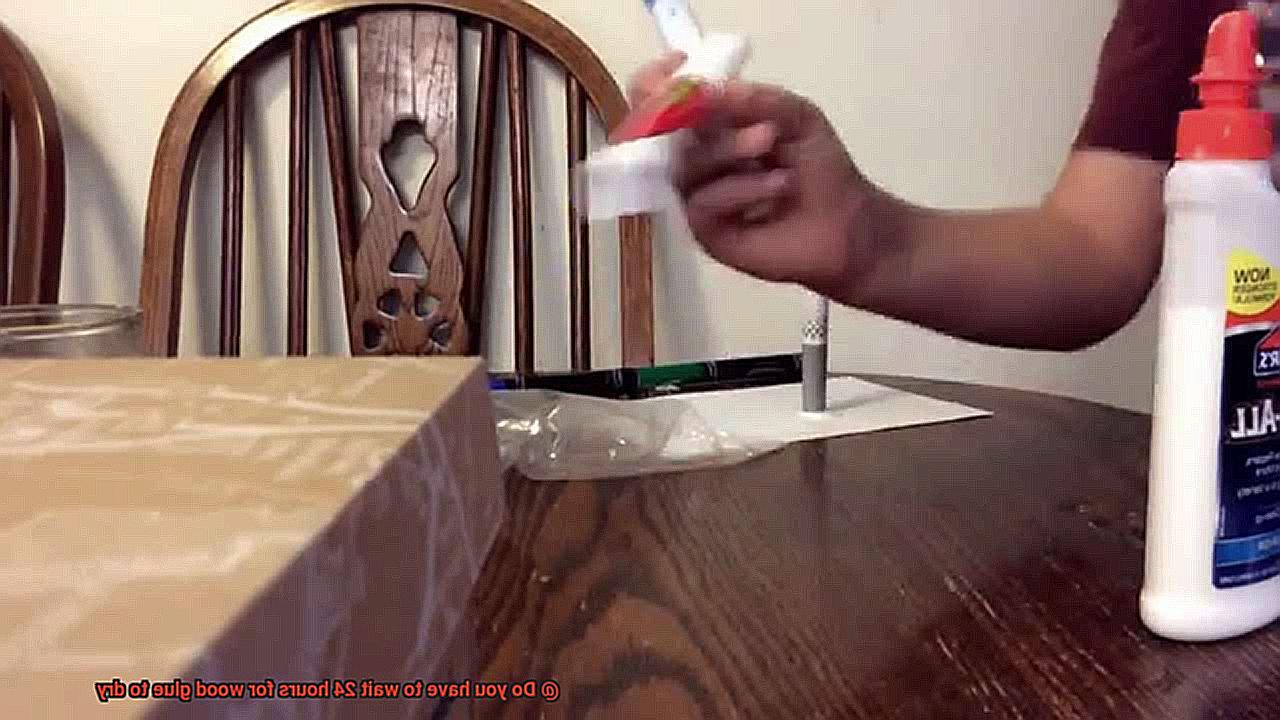
Remember, drying times can be influenced by various factors such as temperature, humidity, and the specific brand or formulation of the wood glue. Always consult the manufacturer’s instructions for accurate drying times and follow their recommendations for optimal results. Patience is key.
Temperature and Humidity’s Role in Wood Glue Drying Time
Wood glue drying time is a crucial factor in woodworking projects, and understanding the role of temperature and humidity can greatly impact efficiency and productivity. Temperature plays a significant role in the chemical reactions that occur during the drying process. In colder temperatures, these reactions occur at a sluggish pace, prolonging the drying time. It’s like trying to sprint through molasses in a chilly workshop. However, in warmer temperatures, the chemical reactions speed up, allowing the glue to dry at a much quicker rate. It’s like a racecar zooming down a sunny highway.
Humidity, on the other hand, affects the evaporation of water from the glue. In humid climates, where the air is thick with moisture, evaporation slows down significantly. This creates a damp environment that hinders the drying process, making it feel like watching paint dry. Conversely, in low humidity environments, water evaporates more quickly from the glue, leading to faster drying times. It’s like seeing steam rise from a hot cup of coffee on a dry winter day.
However, it’s important to note that moderation is key. While higher temperatures and lower humidity levels are generally beneficial for wood glue drying time, extremes can have negative consequences. Excessively high temperatures can make the glue brittle or cause it to lose its adhesive properties. Likewise, extremely low humidity levels can result in similar issues. It’s like walking on a tightrope between speed and stability.
Thickness of the Glue Line and Drying Time
Wood glue is the unsung hero of woodworking projects, holding together pieces of wood with a bond that withstands the test of time. But have you ever wondered why some glue lines dry faster than others? In this article, we delve into the fascinating world of glue line thickness and wood type to understand how they affect drying time. So strap on your safety goggles and let’s dive in.
The Thickness Factor:
Imagine a thin layer of glue gently applied between two pieces of wood. This slim glue line allows for quicker evaporation of moisture, resulting in a faster drying time. Conversely, a thicker glue line holds more moisture, requiring a longer drying period. When working with thicker glue lines, consider reaching for extended drying time wood glues that provide the flexibility you need.
Wood Type Matters:
Not all woods are created equal when it comes to absorbing moisture from glue. Some woods, like oak and maple, are less porous and may take longer to dry as they resist moisture absorption. On the other hand, species like pine and cedar are more porous, readily absorbing the moisture from the glue and therefore drying faster. Understanding the characteristics of your chosen wood can help you plan accordingly and avoid unnecessary delays.
Best Practices for Optimal Drying:
To ensure a strong bond and expedite drying time, it’s crucial to apply an even layer of glue across the bonding surfaces. This uniformity minimizes uneven drying or weak bond formation. Additionally, keep an eye on temperature and humidity levels. Warmer temperatures and lower humidity levels facilitate faster drying times. Conversely, cooler temperatures and higher humidity can extend the drying process. Following the manufacturer’s recommended guidelines regarding temperature and humidity is essential for optimal results.
Accelerating or Delaying Drying Time:
If you’re working against the clock or find yourself in less-than-ideal conditions, there are a few tricks up your sleeve. Adequate air circulation and using a fan can help accelerate drying time by increasing evaporation. Direct exposure to sunlight or UV light can also expedite drying. However, be cautious not to expose the glue to extreme heat, as it may compromise the bond. Conversely, working in a damp or poorly ventilated environment may prolong drying time, so ensure you have proper airflow.
Patience is Key:
While it may be tempting to rush ahead with your project once the glue line appears dry on the surface, it’s essential to allow the glue to fully cure before subjecting it to stress or load-bearing activities. This is particularly crucial for structural applications or projects that require maximum strength and durability. Remember, patience pays off when it comes to woodworking.
Is the Glue Fully Cured After 24 Hours?
When it comes to woodworking projects, glue plays a vital role in creating strong and durable joints. But how long does it take for the glue to fully cure? In this article, we will delve into this question and explore why it is crucial to wait for the glue to fully cure before subjecting the joint to any stress or load.
Drying and curing are two separate processes when it comes to glue. Wood glue typically dries within a few hours, forming a bond that can hold pieces together. This initial drying time allows the glue to reach a tacky state where it starts to harden. However, even though the glue may feel dry to the touch after this initial drying period, it doesn’t mean it has fully cured.
Curing refers to the process of the glue reaching its maximum strength and becoming fully bonded. This process involves a chemical reaction between the glue and moisture in the air. The adhesive crosslinks and creates a stronger bond over time. The curing time can vary depending on factors such as temperature, humidity, and the type of wood glue used.
Different wood glues have different curing times. While some may achieve sufficient strength after 24 hours, others may require longer curing times. It is advisable to refer to the manufacturer’s instructions for specific guidance on curing times.
Factors such as temperature and humidity can also influence the curing process. Higher temperatures generally accelerate the curing process, while lower temperatures slow it down. Similarly, low humidity levels can prolong curing time as the glue requires moisture from the air to cure properly.
So, why is it important to wait for glue to fully cure before subjecting the joint to any stress or load? Rushing the process can compromise the strength and integrity of the bond. Waiting for complete curing ensures that the adhesive has reached its maximum strength and durability.
Following Manufacturer Instructions for Optimal Results
Wood glue, the invisible superhero of woodworking, holds everything together with its strength. But did you know that the key to unlocking its full potential lies in following the manufacturer’s instructions? In this post, we’ll explore why it’s crucial to adhere to these instructions for optimal results when using wood glue. From improved product performance to safety considerations and even cost savings, there’s a lot at stake when it comes to getting it right.
Improved Product Performance:
To ensure that wood glue performs at its best, following the manufacturer’s instructions is essential. These instructions often include information on the recommended drying time for the glue. Waiting for the full drying time allows the glue to form a strong and durable bond between wood pieces. Rushing this process could result in weak bonds that may fail over time.
Safety Considerations:
Woodworking involves sharp tools and heavy machinery, making safety a top priority. Following the manufacturer’s instructions helps ensure that you’re using the glue in a way that minimizes risks. Specific application techniques or additional steps may be required for optimal bonding. By adhering to these instructions, you can work confidently, knowing that you’re taking necessary precautions.
Cost Savings:
Following the manufacturer’s instructions can also save you money in the long run. By using the glue as directed, you can avoid potential issues such as weak bonds or damage to the wood surface. This means fewer repairs and replacements down the line, saving you both time and money.
Consistency across Different Wood Glues:
Not all wood glues are created equal. Different types have different drying times and application techniques. By reading and following the specific instructions for the product you’re using, you ensure consistency in your woodworking projects. This consistency leads to predictable and reliable results, regardless of the type of wood glue you choose.
U0hhFjjW5EU” >
Also Read: How Long Does Super Glue Take to Dry?
Conclusion
Wood glue is a common adhesive used in woodworking projects. One question that often arises is how long it takes for wood glue to dry. Many people believe that you have to wait a full 24 hours for the glue to fully set and dry. But is this really necessary? Let’s dive into the details.
The truth is, the drying time of wood glue can vary depending on several factors. The type of wood glue being used, the temperature and humidity of the environment, and the thickness of the glue application all play a role in how quickly it will dry.
While some wood glues may indeed require a full day to dry completely, there are others that can reach sufficient strength in as little as 20 minutes. It’s important to read the instructions provided by the manufacturer of your specific wood glue to determine its recommended drying time.
That being said, even if your wood glue claims to dry within minutes, it’s still advisable to exercise caution and allow ample time for it to fully cure before subjecting your project to any stress or strain. Rushing the drying process could result in weakened bond strength and compromised durability.
So, while waiting 24 hours might not always be necessary, it’s generally better to err on the side of caution and give your wood glue adequate time to dry before moving forward with your project. Patience is key when it comes to achieving strong and long-lasting bonds in woodworking.
In conclusion, do you have to wait 24 hours for wood glue to dry? The answer depends on various factors. While some glues may dry quickly, it’s best practice to follow the manufacturer’s recommendations and allow sufficient time for proper curing.

